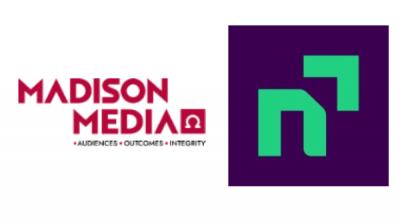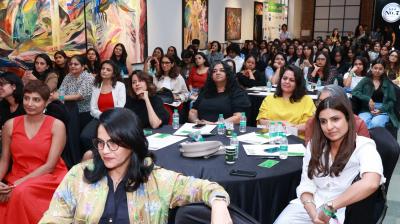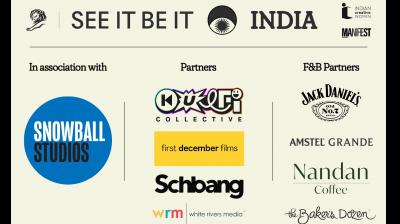India’s spirits market is opening up in ways we haven’t seen before. Premium isn’t only about older age statements or rare barrels anymore. The real action is happening where culture, design, experience, and identity intersect.
That’s the space ABD Maestro has entered with its two recent launches: Rangeela, a vodka co-founded by actor Ranveer Singh, built around colour and expression; and Arthaus, the art-inspired blended malt.
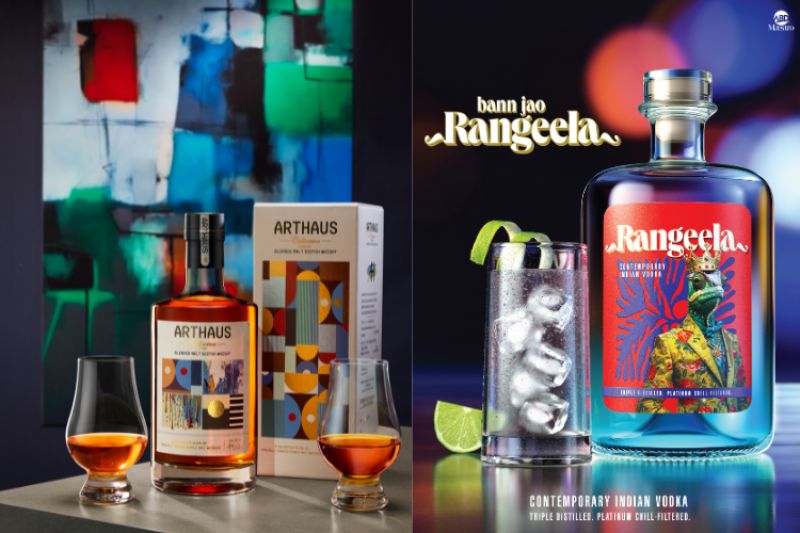
Rangeela speaks to a younger cohort that wants its ‘spirits loud, vivid, and personality-forward’. Arthaus speaks to the culturally curious, drawing from Bauhaus thinking to treat the bottle, the mono carton, and the blend itself as artistic expression.
We sat down with Bikram Basu, managing director, ABD Maestro, to understand how he’s shaping this premium portfolio, how India’s drinking habits are evolving, and where the company is placing its biggest bets.
Edited excerpts:
What is the marketing playbook you are following as you build this portfolio of premium brands?
Even though we’re part of a large organisation, we operate with the mindset of a startup. The playbook starts with one basic question: how can we build an entire portfolio of new brands from scratch and actually get them moving?
Our marketing engine runs on three levers. First, experiential because real human interactions drive genuine advocacy. Second, digital and social, that’s where a brand’s personality lives and spreads. And third, packaging and the liquid itself are the way consumers encounter the brand physically.
It’s a cluttered, fragmented market. So we have to not just deliver, but over-deliver. The real work is sparking curiosity, pulling people in, and earning the right to win. That’s the centre of the entire playbook.
Rangeela brings ABD Maestro into the super-premium vodka segment. What drove the timing and thinking behind this move?
Rangeela is built to shake things up in how it communicates and in the space it occupies. It sits right next to Ranveer Singh’s public persona: high-energy, colourful, curious. We have seen that side of him, and the brand taps straight into that intensity.
Rangeela captures the vividness of Singh and the vividness of India. Every few hundred kilometres here, the food changes, the dialect shifts, the colours transform. A name like Rangeela naturally sparks ideas.
Ask a room what Rangeela means, and most people will agree on the core meaning, but 20% will give wildly different interpretations, and that’s the magic. That range of imagination is exactly what we wanted the brand to open up.
Ranveer Singh is a co-founder of Rangeela and is involved across the portfolio. How does his creative input shape the brand beyond just celebrity association?
He’s not just a face on the label. His involvement stretches across the portfolio. When we were debating the naming logic, he pushed for something rooted in Indian sensibility. Rangeela was one of several options, and we aligned on it very quickly together.
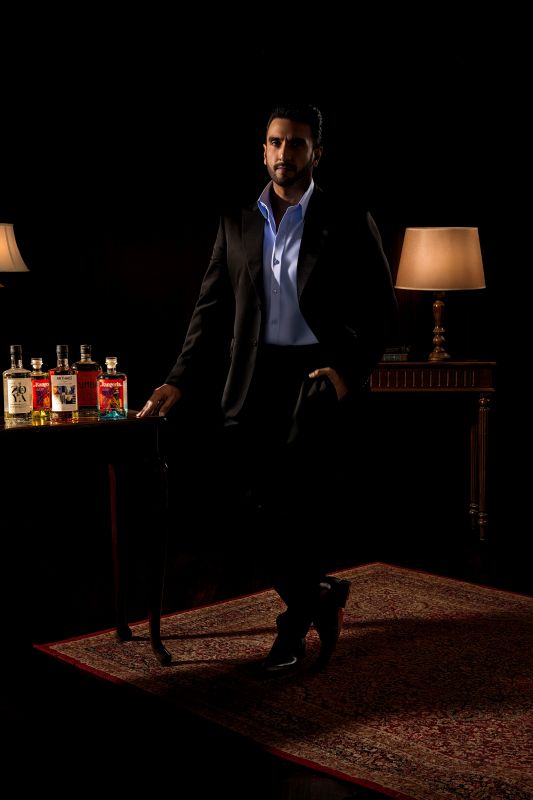
Singh is extremely hands-on. He sits with us, debates ideas, challenges us, and shapes the work. His early years in advertising really show. He understands creative rhythm, how communication lands, and where storytelling should sit.
Partnering with him gives us a creative push, but the real work still lies in execution. Strategy only matters when it hits the last mile, when it becomes liquid on the lips. Global players do this brilliantly. Our challenge is doing it better and doing it differently. And we’ll get there the right way, at the right time.
With regards to Arthaus: Why anchor a whisky brand in art and design instead of heritage or origin stories?
Blending whisky is an art in itself. Give five single malts to a master blender and one will create something layered and beautiful. Arthaus starts from that idea. It brings five single malts together into a complex blended malt.
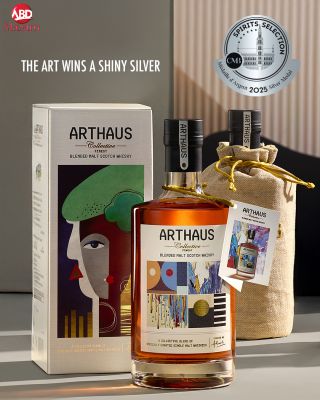
We noticed that in wine, you see labels and collaborations rooted in art. In whisky, that space was still largely unexplored. It felt like a white space waiting for someone to build on imagination and design.
Art, for us, isn’t just paintings. It includes installations, interiors, pop art, graphic design, and multimedia animation. Arthaus sits at the intersection of all of that.
The name draws from the Bauhaus (German: building house) movement, which is celebrating its hundredth year. Bauhaus has been trending in Europe again recently, and we tapped into that resurgence. The idea was simple: if a drop of whisky can be an act of creation, how do you carry that philosophy into the visual and cultural world around it?
With Arthaus positioned as a collectable, how do you plan to carry that design-forward philosophy into the rest of your portfolio?
The storytelling for Arthaus is rooted in art, so it naturally opens up room to collaborate with a wide set of artists. But the broader idea applies across the portfolio. Our bottles need to stand out visually, emotionally, and tactilely.
Rangeela shows that shift in thinking. And there’s more in the pipeline.
Creativity sits at the core of ABD Maestro. Beyond the liquid, we have to answer why a young adult, or someone in their thirties, should pick us from a crowded shelf. Packaging plays a massive role in that first interaction — noticing, picking up, buying, and returning.
A lot is happening behind the scenes, and this phase is genuinely exciting for us.
With strict norms around alcohol advertising, how do you build recall and desirability without direct promotion?
This challenge isn’t new in our category. The premium space doesn’t need massive reach; it needs targeted reach.
Our media and engagement playbook is built around meeting consumers in the spaces they’re already in. Word of mouth, experiential events, digital storytelling, that’s where the impact happens.
You don’t have to be in every city on day one. You start with communities that influence scale, then grow from there. And each category has its own rhythm. Gin behaves differently from whisky. Scotch behaves differently from Woodburn's, which has a more outdoorsy vibe. They may overlap, but they’re not the same audience.
Experiential is something many spirits brands rely on. What has your experience been?
We’re active across cocktail festivals, The Lil Flea, and ProWine — each brings a different energy and audience. We also curate our own experiences and work with advocates, not influencers. Advocates bring credibility; their word carries weight.
This kind of work doesn’t scale overnight. It takes time, and we’re comfortable with that. We’d rather build slowly and correctly.
The festive season is crucial for spirits brands. What trends are you seeing in gifting and consumption?
Spirits have moved into the gifting spotlight. Years ago, it was mithai. Then wine became common for birthdays or house visits. Now spirits have taken that spot. A bottle can be shared; it brings warmth to the moment.
Arthaus works beautifully as a gift because the packaging is designed for it. Zoya and Rangeela carry their own moods, too, so they create different gifting choices.
Seasonality also shapes behaviour. One has Dussehra, Diwali, and then the wedding season from late November to mid-March. Christmas is huge in cities like Mumbai, Goa, and Kolkata, followed by New Year’s. And of course, the cooler months encourage hosting and celebration. We plan city by city, brand by brand.
India’s luxury consumer is changing — younger, design-conscious, globally aware. How are you responding to that shift?
Young adults sit at the centre of every decision today. They’re entering legal drinking age with a very different mindset, shorter attention spans, but sharper awareness. When they’re in a store or ordering online, they’re constantly comparing, researching, and reading reviews.
To win them over, you need deeper engagement. If they love something, they adopt it quickly. They’re experimental and open to new ideas, which helps new brands. But that same nature means they may move on in six months.
Earlier, the consumer lifecycle felt longer. Today, retention costs as much as acquisition. One has to stay new and relevant. That’s the big shift. And it’s happening across categories, especially post-covid.
Do influencers play a meaningful role in your strategy?
Sometimes it works. Sometimes it doesn’t. New brands do need advocacy and need voices that speak to specific communities. But influencers aren’t exclusive. They’ll talk about multiple brands.
So the brand has to deliver. Whatever they claim has to match the liquid and packaging. Their credibility is tied to that. If the product doesn’t live up to their words, the influence fades.
We work with people who have credibility and say the right things for the right reasons. It’s a fine balance.
Which categories are most strategic for ABD Maestro going forward?
In premium India, whisky dominates — almost 90% of the segment. In Indian-Made Foreign Liquor (IMFL) overall, whisky sits around 65%. Brandy and rum shrink drastically in price. White spirits — especially gin and vodka — take a small but growing share.
India will remain a whisky country. But white spirits are growing because more women prefer them, and more men are experimenting with gin. Drinking patterns shift with the occasion; all-male groups lean towards beer or whisky; mixed groups show a wider range.
Gin has built a strong presence. Vodka is high-energy; gin is more relaxed; tequila is moving from shots to slower appreciation. Consumption forms are evolving as fast as the liquids.
We’re at the cusp of that change, and gin is a major focus for us.
What challenges do you foresee as you scale in this category?
Consumption habits are shifting. Young people may drink less, but they drink better. They have many ways to spend their money: fitness, gaming, entertainment, so alcohol has to earn its place.
When they choose to drink, they choose quality. The exceptions will always exist, but for most people, drinking is about relaxed, responsible fun.
Over the next decade, India will lean even harder into premiumisation. Stronger brands will come in, but competition is healthy. It forces companies to improve, deliver better liquid, and never take the consumer for granted. It makes organisations more entrepreneurial, and that’s exactly what the market n



